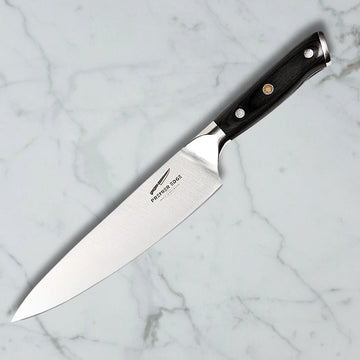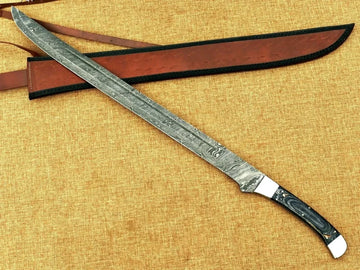Folding knives, also known as pocket knives, are a staple in the world of tools and everyday carry (EDC) items. These versatile tools have a rich history, combining practicality with craftsmanship, and have become indispensable to adventurers, craftsmen, and everyday users alike. Whether you’re a collector, an outdoors enthusiast, or someone who appreciates a well-made tool, understanding the different aspects of folding knives can enhance your appreciation and use of these versatile instruments.
1. History of Folding Knives
The origins of folding knives can be traced back to ancient civilizations, with some of the earliest examples dating to around 600-500 BCE in regions like Spain and Rome. These early knives were simple, with basic mechanisms, but they laid the foundation for the more complex and refined designs we see today. Over centuries, the folding knife evolved, with advancements in metallurgy and engineering contributing to the diverse range of designs and functionalities available now.
2. Types of Folding Knives
Folding knives come in various types, each serving different purposes. Here are a few common types:
- Slip Joint: One of the most traditional designs, a slip joint knife has a simple mechanism where the blade is held open by tension from a back spring. There is no lock, so the blade can be closed by applying pressure.
- Lockback: This type of knife has a locking mechanism that engages when the blade is fully open. The lock must be manually released to close the knife, adding an extra layer of safety.
- Liner Lock: In a liner lock knife, a spring-loaded liner moves behind the blade when it’s opened, locking it in place. The blade is released by pushing the liner to the side, allowing the blade to be closed.
- Frame Lock: Similar to the liner lock, the frame lock uses a portion of the knife's frame to lock the blade in place. This design is popular for its strength and simplicity.
- Flipper and Assisted Opening: These knives are designed for quick deployment, often with a small tab or lever on the blade that the user can push to open the knife rapidly. Some also feature spring-assisted mechanisms for even faster opening.
3. Materials and Construction

The materials used in folding knives greatly impact their performance, durability, and aesthetics. The blade steel is a critical factor, with common options including:
- Stainless Steel: Known for its resistance to rust and corrosion, stainless steel is a popular choice for everyday use. Types like 440C, VG-10, and S30V offer a good balance of sharpness, edge retention, and toughness.
- Carbon Steel: Favored for its sharpness and ease of sharpening, carbon steel is less resistant to corrosion but offers excellent edge retention and strength. Popular varieties include 1095 and D2.
- Titanium and Aluminum: These materials are often used in the handles, offering a lightweight yet strong structure. Titanium, in particular, is highly durable and corrosion-resistant, making it a premium choice for high-end knives.
Handle materials also vary, ranging from traditional wood and bone to modern synthetics like G-10, Micarta, and carbon fiber. The choice of handle material can affect grip, durability, and the overall look of the knife.
4. Uses and Applications
Folding knives are used in a wide range of scenarios, from everyday tasks to specialized applications:
- Everyday Carry (EDC): For many, a folding knife is an essential EDC item, useful for opening packages, cutting ropes, or preparing food.
- Outdoor Activities: Whether camping, hiking, or fishing, a folding knife is a vital tool for tasks like preparing kindling, cleaning fish, or cutting through tough materials.
- Tactical and Survival: In survival situations, a folding knife can be a lifesaver. Its compact size makes it easy to carry, yet it’s versatile enough for tasks like building shelters, making fire, and self-defense.
- Collecting: Many enthusiasts collect folding knives for their craftsmanship, historical value, or aesthetic appeal. Limited editions, custom designs, and knives with unique materials or mechanisms are highly sought after.
5. Choosing the Right Folding Knife
When selecting a folding knife, consider the following factors:
- Purpose: What will you use the knife for? EDC, outdoor activities, and tactical uses may require different features.
- Size and Weight: A knife should be comfortable to carry and use. Larger knives offer more cutting power but can be cumbersome, while smaller knives are more convenient but may lack certain capabilities.
- Locking Mechanism: Safety is paramount, so choose a locking mechanism that suits your needs and preferences.
- Blade Shape: Different blade shapes excel at different tasks. For example, a drop point blade is versatile and good for general use, while a tanto blade is better for piercing and tactical purposes.
- Material: Consider the materials used in the blade and handle for their durability, maintenance requirements, and aesthetics.
6. Maintenance and Care
Proper care and maintenance of your folding knife will ensure its longevity and performance. Regularly clean the blade and handle, and keep the pivot area free of debris. Lubricate the moving parts to ensure smooth operation, and sharpen the blade as needed. If your knife has a stainless steel blade, occasional oiling will help prevent rust, especially if the knife is used in humid or salty environments.
7. Legal Considerations
Before purchasing or carrying a folding knife, it’s essential to be aware of the laws in your area. Knife laws vary widely, with some regions restricting blade length, locking mechanisms, or carry methods. Always ensure that your knife is legal to carry in your location.
Conclusion
Folding knives are more than just tools; they are a blend of functionality, craftsmanship, and personal expression. Whether you’re using it for everyday tasks, outdoor adventures, or simply admiring the craftsmanship, a well-chosen folding knife can be a valuable companion. With the right knowledge, you can select, maintain, and appreciate a folding knife that meets your needs and reflects your style.




